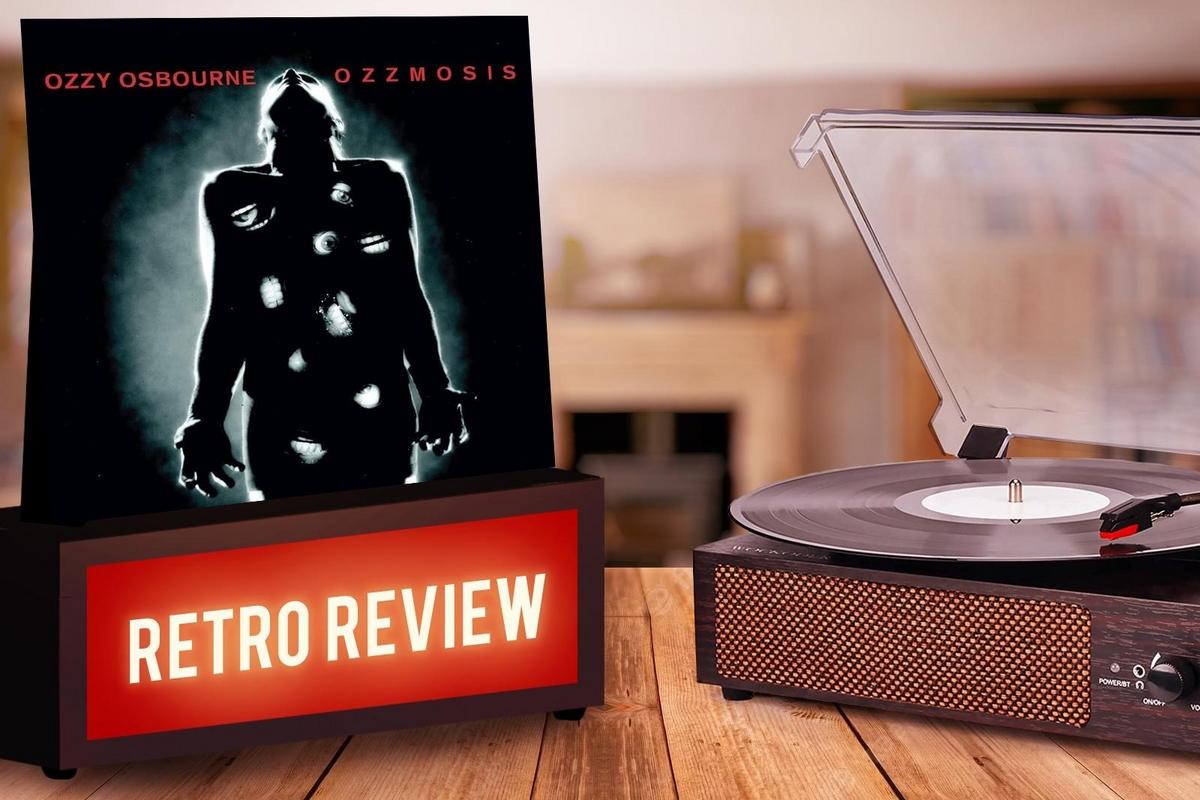It’s baffling in hindsight to consider Ozzy Osbourne retiring in his mid-40s.
Nevertheless, the Prince of Darkness took his first final bow at the conclusion of his 1992 No More Tours Tour in support of the previous year’s blockbuster No More Tears. His break from the spotlight — motivated by an incorrect multiple sclerosis diagnosis — was brief, but it was still long enough to drum up excitement when he returned with 1995’s Ozzmosis.
The hype was warranted. Along with longtime Ozzy guitarist Zakk Wylde and Journey drummer Deen Castronovo, Ozzmosis reunited Osbourne with bassist and former Black Sabbath bandmate Geezer Butler, who’d previously participated in the singer’s No Rest for the Wicked tour. Sweetening the pot was producer Michael Beinhorn, hot off the success of Soundgarden‘s Superunknown.
Yet despite the murderer’s row of talent involved, Ozzmosis is a frustratingly uneven listen that too often finds Osbourne abandoning his hell-raising heavy metal thunder in favor of monotonous, radio-friendly hard rock.
READ MORE: Ozzy Osbourne Solo Albums Ranked Worst to Best
‘Ozzmosis’ Starts Strong but Goes Downhill
It doesn’t start that way, though. Album opener and lead single “Perry Mason” comes out swinging with a deliciously sinister Mellotron riff and stomping, gargantuan groove. Osbourne delivers the percussive verses and soaring choruses with devilish panache, turning what could have been a gimmicky song about a fictional lawyer into one of his strongest post-retirement singles.
The rest of Ozzmosis never quite reaches the high bar set by “Perry Mason.” Follow-up singles “I Just Want You” and “See You on the Other Side” lack verve and venom, instead relying on clean guitars, beds of keys and saccharine melodies. The staggered, chugging guitars on “Thunder Underground” and descending chromatic riffs on “My Jekyll Doesn’t Hide” allow the band to flex its collective muscles — Butler’s nimble bass lines sound as exciting here as they did in 1970 — but they’re missing the urgency and anthemic hooks of Osbourne’s best songs.
Two Key Shortcomings of ‘Ozzmosis’
Ozzmosis ultimately suffers from its length and its sameness. The 10-song album clocks in at nearly 57 minutes, averaging five and a half minutes per song, and almost every track lumbers along at the same midtempo pace.
They all sound like a conscious effort to recreate the magic of “No More Tears,” but that song succeeded because it was offset by up-tempo rockers such as “Desire” and “Zombie Stomp.” On Ozzmosis, each track blends into the next, with Beinhorn’s sterile, overly polished production stripping them of much-needed bite. Likewise, Osbourne’s super-high vocals sound suspiciously manicured in spots and occasionally lapse into “whiny” territory.
Despite Mixed Reviews, ‘Ozzmosis’ Was a Huge Hit
Despite its shortcomings (and mixed reviews at the time), Ozzmosis was a commercial success, peaking at No. 4 on the Billboard 200 and going double platinum. It’s hardly a bad album, just uninspired compared to its predecessors. It set the tone for Osbourne’s next several studio albums and, in retrospect, marked a turning point in his career. Although he was still one of the biggest names in metal, Osbourne subtly shifted from contemporary hitmaker to legacy act beginning with Ozzmosis.
Every artist who’s lucky enough to stay in the game for decades eventually makes this shift. That it took Osbourne seven albums and 15 years to do so is a testament to his longevity — and if given a choice between Ozzmosis and retirement, we’d still pick Ozzmosis any day.
Watch Ozzy Osbourne’s ‘I Just Want You’ Music Video
The Best Song From Every Ozzy Osbourne Album
A journey through Ozzy Osbourne’s solo output seems to mirror the Black Sabbath icon’s life and times.
Gallery Credit: Ultimate Classic Rock Staff



